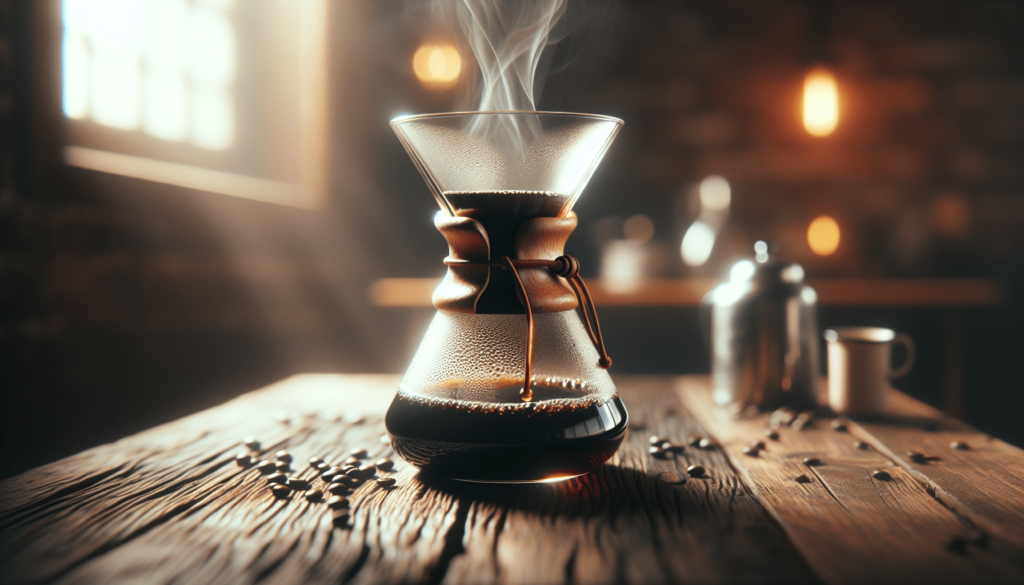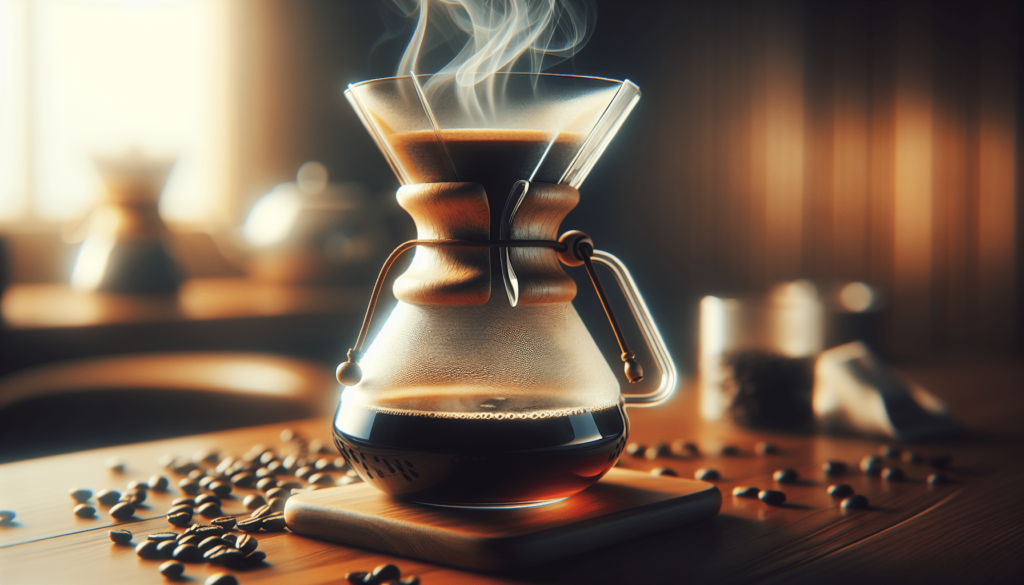Which brewing method extracts the least caffeine? If you’ve ever pondered this question while sipping your morning coffee, you’re not alone. Many coffee enthusiasts are curious about the caffeine content in their favorite brew. Whether you’re looking to cut back on caffeine for health reasons or are simply curious, understanding which brewing method extracts the least caffeine can offer valuable insights.

Understanding Caffeine Extraction
Before diving into specific brewing methods, it helps to understand the concept of caffeine extraction. Caffeine extraction is the process through which caffeine is pulled from coffee grounds into water. Various factors, including water temperature, brewing time, grind size, and coffee-to-water ratio, influence this process.
Factors Affecting Caffeine Extraction
The interaction between multiple elements determines the amount of caffeine extracted:
- Water Temperature: Higher temperatures facilitate quicker caffeine extraction.
- Brewing Time: Longer brewing times generally extract more caffeine.
- Grind Size: Finer grinds allow for more caffeine to be extracted due to increased surface area.
- Coffee-to-Water Ratio: More coffee or less water leads to higher caffeine concentration.
Popular Brewing Methods
Several popular coffee brewing methods vary significantly in how much caffeine they extract. We’ll explore these methods in detail to identify which ones extract the least caffeine.
Drip Coffee
Drip coffee is ubiquitous and convenient, often associated with the classic image of a home coffee maker. Hot water filters through ground coffee, dripping into a carafe.
- Brewing Time: 5-10 minutes
- Water Temperature: 195-205°F (90-96°C)
- Grind Size: Medium
- Coffee-to-Water Ratio: 1:16 – 1:18
Drip coffee has a balanced flavor profile and moderate caffeine content. Depending on the drip coffee maker and filter used, the caffeine can range between 95-200 mg per 8 oz cup.
French Press
The French Press, or press pot, is known for its simplicity and full-bodied flavor. Coarsely ground coffee steeps in hot water for several minutes before being pressed through a metal filter.
- Brewing Time: 4 minutes
- Water Temperature: 200°F (93°C)
- Grind Size: Coarse
- Coffee-to-Water Ratio: 1:12 – 1:15
The metal mesh filter allows more oils and fine particles to pass through, resulting in a richer texture. Caffeine extraction is typically higher, ranging from 100-150 mg per 8 oz cup.
Espresso
Espresso is a concentrated form of coffee made by forcing hot water through finely-ground coffee under high pressure.
- Brewing Time: 25-30 seconds
- Water Temperature: 190-196°F (88-91°C)
- Grind Size: Fine
- Coffee-to-Water Ratio: 1:2
Espresso is potent, containing about 63 mg of caffeine per shot (1 oz). However, due to its small serving size, it contains less caffeine than standard servings of other brewing methods.
Cold Brew
Cold brew coffee is prepared by steeping coarse coffee grounds in cold water for an extended period, usually ranging from 12 to 24 hours.
- Brewing Time: 12-24 hours
- Water Temperature: Room temperature or cold
- Grind Size: Coarse
- Coffee-to-Water Ratio: 1:4 – 1:8 (concentrate) or 1:15 (ready-to-drink)
Cold brew yields a smoother, less acidic coffee with a relatively high caffeine content. An 8 oz serving of cold brew can contain between 100-200 mg of caffeine.
AeroPress
The AeroPress is a versatile brewing method combining immersion and pressure. Coffee is steeped and then forced through a filter using air pressure.
- Brewing Time: 1-2 minutes
- Water Temperature: 175-185°F (80-85°C)
- Grind Size: Fine to medium
- Coffee-to-Water Ratio: 1:7 – 1:9
Given its short brewing time and versatile method, the AeroPress typically extracts caffeine in the range of 70-120 mg per 8 oz serving.
Pour-Over
The pour-over method involves manually pouring hot water over coffee grounds, allowing the coffee to drip into a carafe or mug below.
- Brewing Time: 2-4 minutes
- Water Temperature: 195-205°F (90-96°C)
- Grind Size: Medium-fine
- Coffee-to-Water Ratio: 1:15 – 1:17
Pour-over coffees, like those from a Chemex or Hario V60, have caffeine content in the range of 80-140 mg per 8 oz.
Identifying the Brewing Method with the Least Caffeine Extraction
With understanding the basics of each brewing method, it becomes more manageable to identify the method extracting the least caffeine.
Comparison Table
Let’s compile the data into a table for clarity:
| Brewing Method | Average Caffeine Content (per 8 oz) | Brewing Time | Water Temperature (°F) | Grind Size | Coffee-to-Water Ratio |
|---|---|---|---|---|---|
| Drip Coffee | 95-200 mg | 5-10 minutes | 195-205 | Medium | 1:16 – 1:18 |
| French Press | 100-150 mg | 4 minutes | 200 | Coarse | 1:12 – 1:15 |
| Espresso | 63 mg (per 1 oz shot) | 25-30 seconds | 190-196 | Fine | 1:2 |
| Cold Brew | 100-200 mg | 12-24 hours | Room Temp/Cold | Coarse | 1:15 (ready-to-drink) |
| AeroPress | 70-120 mg | 1-2 minutes | 175-185 | Fine-Medium | 1:7 – 1:9 |
| Pour-Over | 80-140 mg | 2-4 minutes | 195-205 | Medium-fine | 1:15 – 1:17 |
Analyzing the Data
Looking at the average caffeine content, the AeroPress emerges as the brewing method most consistent in extracting lower amounts of caffeine for an 8 oz serving. Despite its potential to produce concentrated coffee, its shorter brewing time and moderate water temperature contribute to less caffeine extraction overall.
Additional Tips for Reducing Caffeine Intake
Once you’ve chosen a brewing method that aligns with your caffeine preference, you may want to explore additional strategies to further reduce caffeine intake.
Opt for Low-Caffeine Beans
Adjust Your Brew Ratio

Why Reduce Caffeine?
Understanding the reasons behind wanting to reduce caffeine can further motivate you to make informed choices.
Health Considerations
Sleep and Anxiety
Sensitivity to Caffeine
Frequently Asked Questions
Is Decaf Completely Caffeine-Free?
How Can I Measure the Caffeine Content in My Brew?
Are There Benefits to Brewing Coffee with Less Caffeine?
Does Roast Level Affect Caffeine Content?
Can I Use the Same Coffee Beans for Different Brewing Methods?
Conclusion
Choosing the right brewing method can have a significant impact on your caffeine intake. From AeroPress’s unique advantages to the smooth experience of cold brew, each method has its own charm and influence on caffeine extraction. Adjustments in your brewing process, such as grind size and water temperature, can also help you tailor your coffee just the way you like it. Enjoy your cup of coffee with the perfect caffeine level that suits your needs!
